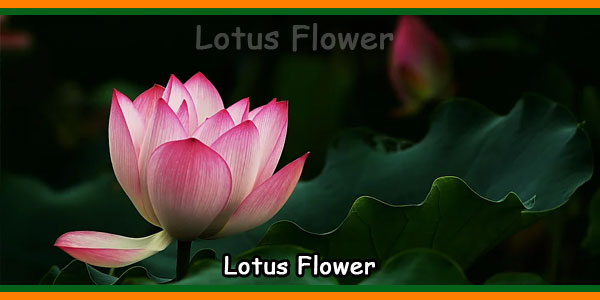The lotus is the symbol of truth, auspiciousness and beauty (satyam, shivam, sundaram). The Lord is also this nature and, therefore, His various aspects are compared to a lotus (ie, lotus eyes, lotus feet, lotus hands, lotus of the heart, etc.).
The lotus blooms with the rising sun and closes at night. In the same way, our mind opens and expands in the light of knowledge. The lotus grows even in muddy areas. It remains beautiful and immaculate despite his environment, reminding us that we too can and must strive to remain pure and beautiful inside, in all circumstances.

The lotus leaf is never wet, although it is still in the water. It symbolizes the man of wisdom (gyaani) who remains happy, unaffected by the world of sadness and change. This is revealed in a shloka of the Bhagwad-Geeta:
Brahmanyaadhaaya karmaani
Sangam tyaktvaa karoti yaha
Lipyate na sa paapena
Padma patram ivaambhasaa
One who performs actions, offering them to Brahman (the Supreme), giving up attachment, is not contaminated by sin, just as a lotus leaf is not affected by the water it contains.
From this we learn that what is natural to the man of wisdom becomes a discipline to be practiced by all Sadhakas or spiritual seekers and devotees. Our bodies have certain energy centers described in Yoga Shastras as chakras.
Each is associated with the lotus which has a number of petals. For example, a lotus with a thousand petals represents the Sahasra chakra on the top of the head, which opens when the yogi reaches Divinity or Realization. In addition, the position of the lotus (padmaasana) is recommended when sitting to meditate. A lotus is born from the navel of Lord Vishnu. Lord Brahma is from him to create the world. Therefore, the lotus symbolizes the link between the creator and the supreme cause.
It also symbolizes Brahmaloka, the home of Lord Brahma. It is said that the auspicious sign of the swastika evolved from the lotus.
